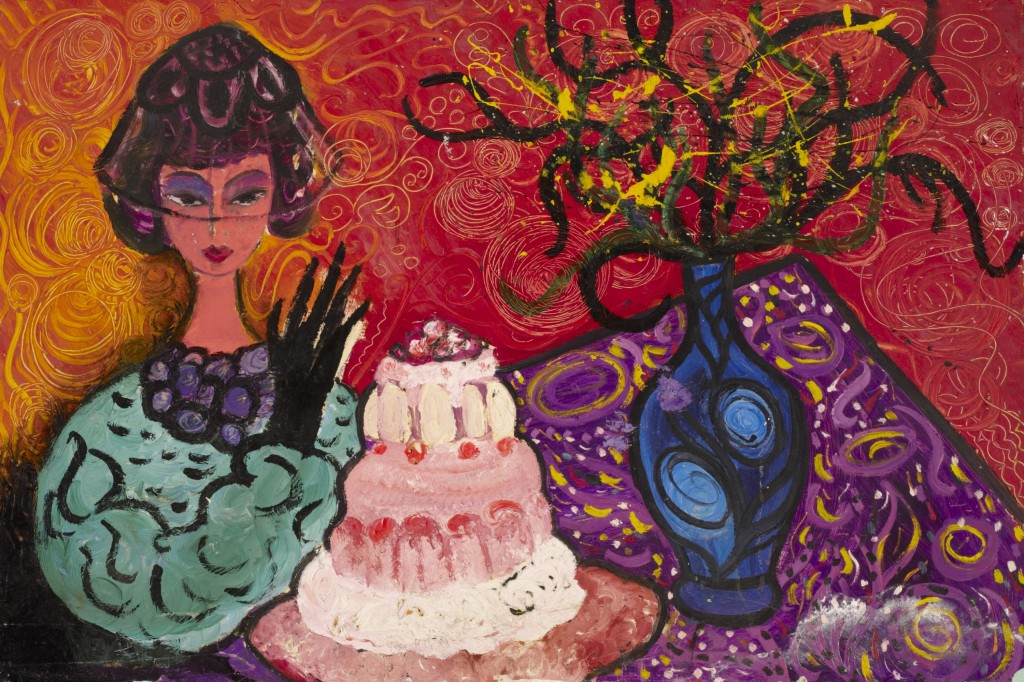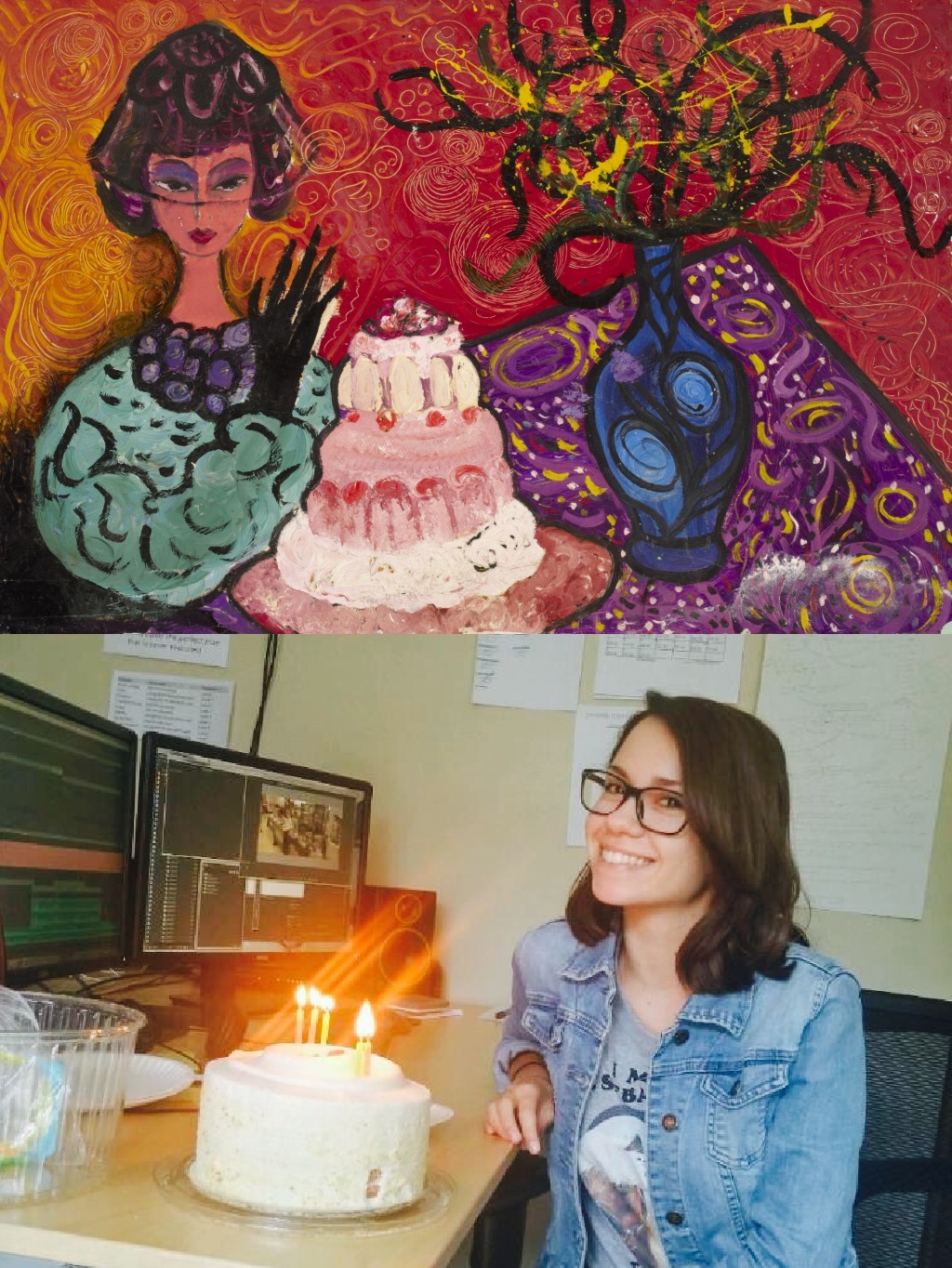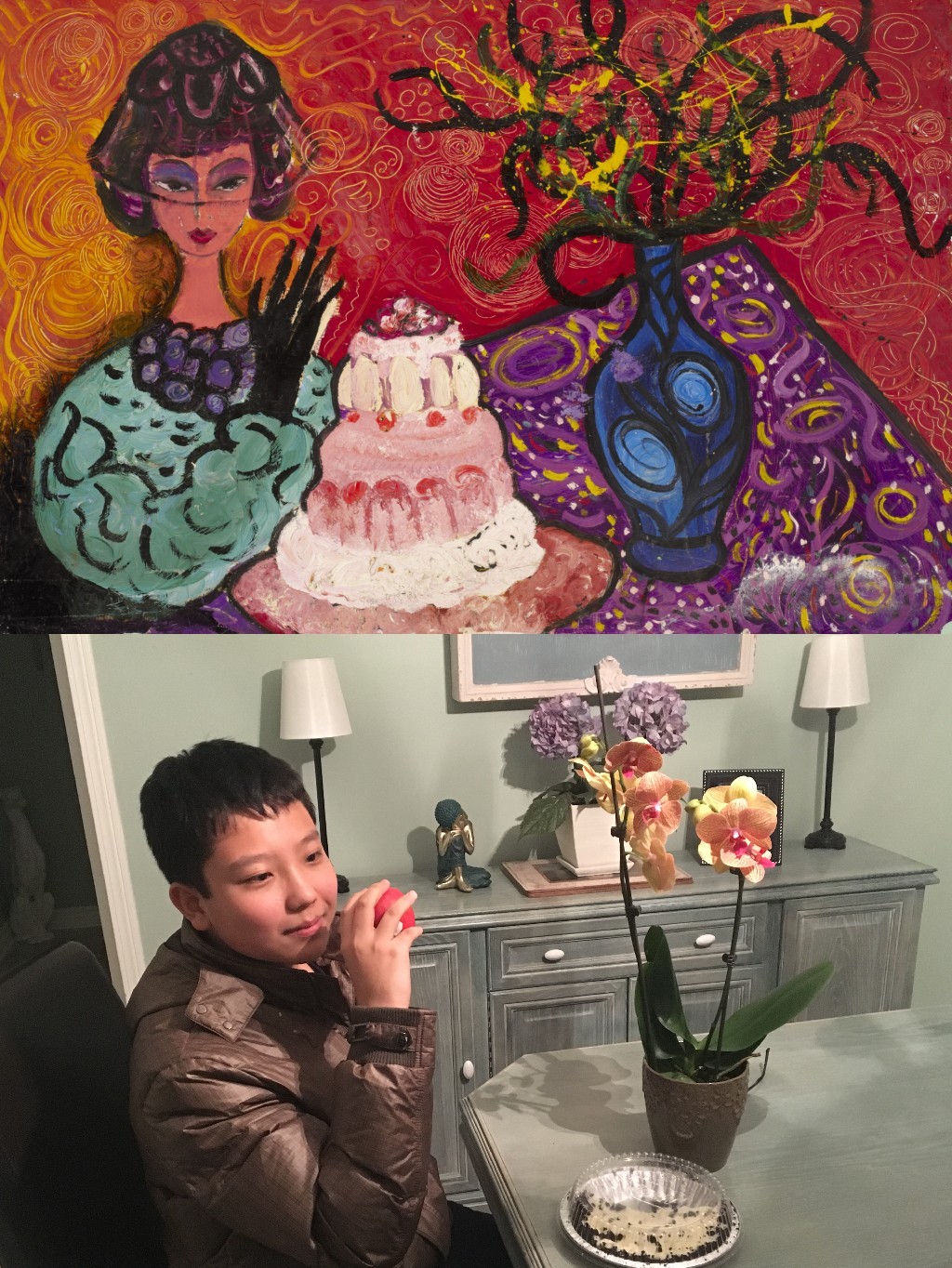By: Stanley Lench (1934-2000)
Created: Possibly circa 1955, Collection: Bethlem Museum of the Mind, London, England Rights: CC-BY-SA
This splendidly colourful work of art is an immensely fun one to recreate. You could look longingly at a cake or substitute the red and white gateaux for an equally decadent prop, while an elegant vase or a plant could help also help your faithful recreation. Look at the see-through veil, black gloves, feathery green coat and purple pearls around the sitter's neck. Black gloves, purple eye shadow, luminous hair and a dark red or orange background could also be the icing on your cake.
Stanley Lench taught himself to paint as a teenager and excelled, holding an exhibition at the Beaux Art Gallery aged just 19. It helped him secure a place in the stained glass department of the Royal College of Art. Inspired by ancient cultures, Cubism and silent film, Lench studied during the emergence of pop art, between 1955 and 1958.
His work often surfed themes of youth, glamour, beauty and their inevitable defiler, mortality. After graduating from the RCA, Lench enjoyed some commercial success, selling work to Dame Edith Sitwell, and a portrait of actress Pola Negri to the Museum of Modern Art in New York.
Throughout his career, Lench experienced periods of great artistic creativity interspersed with periods of introspection and seclusion, and was treated on a number of occasions at Bethlem Royal Hospital and the Maudsley Hospital. Lench worried about his career as an artist, and felt rejected by the art world he continued to support through frequenting exhibitions and later working at Tate.
Lench had very strong feelings about this ‘bourgeois artistic clique’ (as he named them), expressed through the composition and inscriptions in his works. Some of his drawings were undertaken during a stay at Bethlem.
While being treated at Bethlem, Lench also engaged with museum staff and the design for a door panel commissioned by a former curator, demonstrating the same bold, stained glass style as his paintings. Despite concerns about his career, Lench succeeded in forging a strong aesthetic and thematic style that was grounded in art history and bound up in his own interests and ideas. In doing this, Lench cheated death and time, leaving a collection of art work for posterity that is both beautiful and didactic.
Made in oil on board, this cakey creation, unmounted and unframed, was made at some point during the 20th century. On the left, a half-length woman is portrayed, partially veiled and wearing a green dress.
She has her right arm raised to show her hand, on which she is wearing a black glove. She is sitting at a purple, yellow and white swirling patterned table on which there is a pink and white cake on the left and a purple vase containing flowers on the right. All this is set against a swirling, orange-patterned background.


